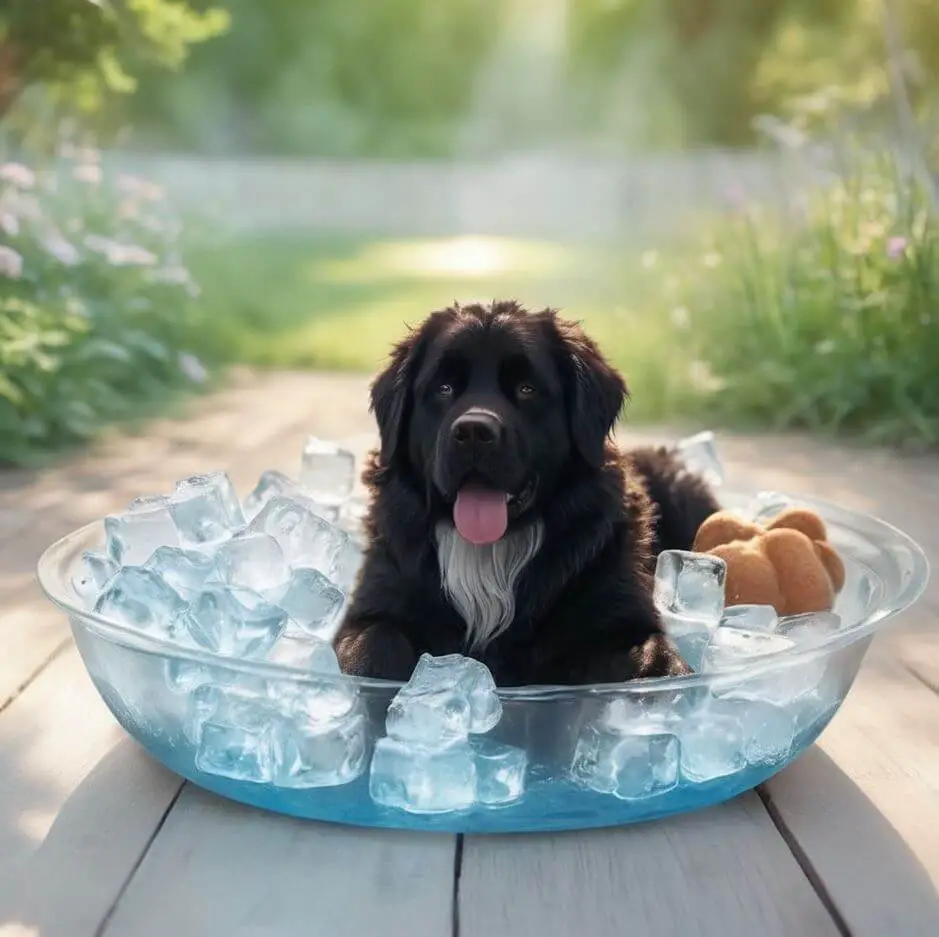Discovering the source of your furry friend’s joy as their tail wags at the mere glimpse of an ice cube unveils a fascinating connection between dogs and these frozen delights. Beyond being a seasonal pleasure, ice cubes hold an unexpected allure for our canine companions. In this exploration, we’ll delve into the icy realms of canine desire and uncover the myriad reasons why dogs and ice cubes make an ideal pairing.

Cooling Down Canines with Ice Cubes
When hot weather challenges our canine friends, who primarily rely on panting and paw pad heat dissipation, ice cubes emerge as a savior. These frozen treats offer a swift and refreshing solution to combat overheating. Strategically placing ice cubes in a water bowl or scattering them on the floor provides an enjoyable way for your pup to cool down and rehydrate. Additionally, the playful chase and satisfying crunch of an ice cube on a scorching day add an extra layer of delight.
The Hidden Appeal of Ice Cubes
The affinity for ice cubes goes beyond a simple cooling mechanism, tapping into deeper canine instincts and desires.
1 – Crunch Time – Satisfying Chewing Instincts
Ice cubes become a temporary outlet for a dog’s natural urge to chew. The satisfying crunch not only meets this instinct but also contributes to dental health by scraping away plaque buildup.
2 – Mental Stimulation – A Dog Challenge with a Chilly Twist
Ice cubes transform into tiny puzzles, challenging dogs to figure out how to lick, nudge, and bat at them to break them apart. This sight provides both amusement and intellectual enrichment.
3 – Sensory Exploration – Textures and Sounds for Curious Pups
The cold, slippery texture of an ice cube against their tongues and the pleasing crack as it breaks under their paws offer novel sensory experiences for inquisitive pups. It’s akin to a mini ice-cold ASMR session for your furry friend.
Ice Cube Safety for Your Furry Friend
While generally safe, a few guidelines ensure your dog’s well-being:
- Size Matters: Opt for appropriately sized ice cubes to avoid choking hazards, especially for smaller breeds.
- Moderation is Key: Avoid digestive upset by starting with a few cubes and observing your dog’s reaction.
- Caution with Flavored Cubes: Steer clear of artificial sweeteners or toxic ingredients like grapes; opt for natural flavors like fruit or diluted broth.
Beyond the Cube – Alternative Cool-Down Treats
For those craving variety, consider these cool-down alternatives:
- Frozen Kongs: Stuff a Kong toy with wet food, peanut butter, or yogurt and freeze for a mentally stimulating treat.
- DIY Frozen Treats: Experiment with frozen mashed banana, broth, or diluted peanut butter in silicone molds for healthy and delicious ice pops.
- Splash Pads and Paddling Pools: Provide a refreshing way for your dog to cool down with a splashing good time; ensure shaded breaks and avoid prolonged sun exposure.
The next time your dog eagerly eyes an ice cube, remember that it’s more than a cold treat. It’s a refreshing reward, a playful puzzle, and a delightful sensory experience – all packed into one tiny, frosty delight. Embrace the love for ice cubes and share cool, refreshing moments with your furry friend!
Bonus FAQ:
- Can puppies have ice cubes? Wait until puppies are at least 6 months old and have all their adult teeth.
- Are ice cubes good for dog’s teeth? While they can help remove plaque, they’re not a substitute for proper dental care.
- Where can I find frozen dog treats? Many pet stores offer a variety of pre-made frozen treats that are safe and delicious for dogs to enjoy.
